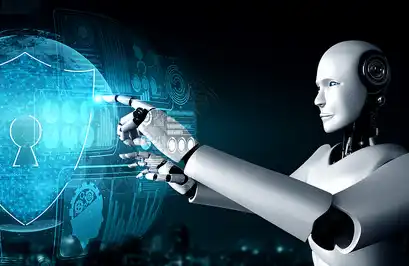From Miner to Validator: Ethereum's Ten-Year Journey of Hashpower and Narrative Shift
Original Article Title: "The Decade Itch of a World Computer"
Original Article Author: ChandlerZ, Foresight News
Throughout the past century, humanity has repeatedly redefined the form of computers.
From the massive computers born for rocket navigation in the mid-20th century, to IBM pushing mainframes into enterprises, and then Microsoft and Apple bringing personal computers into households, followed by smartphones putting computers in everyone's pocket.
Every leap in computing power has reshaped the way people and the world are connected.
In 2013, 19-year-old Vitalik Buterin, while playing World of Warcraft, seriously pondered a question for the first time because Blizzard arbitrarily weakened the skills of warlocks: In a digital world, who ensures that the rules are not arbitrarily altered?
If there was a "world computer" that did not belong to any company, was not controlled by a single authority, and could be used by anyone, could it become the starting point for the next form of computing?
On July 30, 2015, in a small office in Berlin, dozens of young developers stared at the block counter, and when the number reached 1,028,201, the Ethereum mainnet automatically launched.
Vitalik recalled: "We were all sitting there waiting, and then it finally hit that number, and about half a minute later, blocks started being produced."
At that moment, the spark of the world computer was ignited.
Starting Point and Spark
At that time, Ethereum had fewer than one hundred developers. It first embedded smart contracts into the blockchain, providing a Turing-complete stage, transforming the blockchain from a mere accounting tool into a world-class public computer capable of running programs.
Soon, this newborn world computer faced a severe test.
In June 2016, the Ethereum-based decentralized autonomous organization "The DAO" experienced a significant security incident. Hackers exploited a smart contract vulnerability and siphoned off approximately $50-60 million worth of Ether. The community engaged in heated debates around whether to "rollback history," ultimately choosing a hard fork to rescue the assets, which also led to the emergence of another chain—Ethereum Classic.
This event brought the governance issue of the world computer to the forefront for the first time: Should one uphold immutability or correct mistakes to protect users?
The ICO boom from 2017 to 2018 propelled Ethereum to new heights. Countless projects issued tokens on Ethereum, raising billions of dollars and causing the price of ETH to skyrocket. However, the subsequent burst of the bubble plunged Ethereum into a trough, with the ETH price dropping over 90% from its peak in late 2018. The network faced congestion and high transaction fees, drawing criticism. During that period, the popularity of CryptoKitties even brought the mainnet to a near standstill, exposing, for the first time, the limitations of the network's computing power.
To address the performance bottlenecks, the Ethereum community had been researching on-chain sharding since as early as 2015, attempting to enhance throughput by splitting the node validation load. However, the implementation of sharding technology was complex and progress was slow. Meanwhile, developers also explored off-chain scaling solutions, ranging from early-stage state channels and Plasma to the emergence of Rollup solutions in 2019. Rollup significantly improved processing capacity by batching a large number of transactions for main chain validation but required sufficient data availability support from the mainnet. Fortunately, by around 2019, Ethereum made breakthroughs in Data Availability, resolving the issue of massive data verification.
Subsequently, Ethereum gradually formulated a path of "mainnet security, Layer 2 execution," and the world computer began to break down into a multi-layer collaborative system.
In the following years, DeFi exploded on Ethereum, decentralized lending, trading, and derivatives emerged like mushrooms after rain; the NFT craze propelled digital art into the mainstream, with Beeple's artwork selling for $69 million at Christie's. Despite the network's prosperity, the persistently high transaction fees became a problem, but Ethereum began to respond by improving its protocol. In August 2021, the EIP-1559 upgrade implemented a base fee burn mechanism, burning ETH for each transaction, thereby reducing inflationary pressure during periods of high demand. This reform briefly resulted in a net deflation of ETH during the 2021-2022 bull market, driving its price to a historical high of nearly $4900.
On September 15, 2022, The Merge was completed, transitioning the core energy of the world computer from the energy-intensive PoW to PoS, reducing energy consumption by 99% and decreasing the new issuance rate by 90%. ETH holders began participating in the network through staking, completely overhauling the energy system of this world computer.

A year after the merger, data shows that Ethereum's net supply has decreased by approximately 300,000 ETH. This significant reduction in supply, compared to the issuance that would have occurred under the PoW mechanism, has strengthened the market's expectation of ETH scarcity.
After the above-mentioned transformations, by the end of 2023, both the performance and economic mechanism of the Ethereum mainnet had improved, but new challenges had also emerged. To reduce fees and encourage Rollup development, Ethereum implemented the "Dencun" upgrade (Deneb + Cancun) in March 2024, introducing EIP-4844, also known as Proto-Danksharding technology. This improvement introduced special "data blob" transactions for Rollups to submit batch transaction data. Since blob data is only stored temporarily, the cost is much lower than regular call data, significantly reducing the cost for Layer 2 networks to submit data to the mainnet. The successful launch of Dencun marked a significant reduction in Rollup costs, pushing the world computer closer to its sharding goal.
A decade has passed, and this world computer has evolved from the ideal in the whitepaper into indispensable real-world infrastructure.
However, behind the shining nodes, new challenges have quietly emerged...
The Midlife Fog
Entering 2024-2025, Ethereum faced prominent challenges.
Layer 2 Drainage Effect
The dilemma Ethereum faces becomes apparent in 2024-2025.
The significant rise of Layer 2 solutions, embraced by Ethereum in recent years to relieve mainnet pressure, has also resulted in a large number of transactions and value being locked in Layer 2 networks, failing to flow back to the mainnet. In an early 2025 report, Standard Chartered Bank bluntly stated that the rise of Layer 2 networks has eroded Ethereum mainnet's value capture. The report estimated that just Base, a leading Ethereum Layer 2 launched by Coinbase, has "taken away" approximately $500 billion of Ethereum's ecosystem value.

Transactions and applications that could have taken place on the mainnet have shifted to the lower-cost L2, reducing the mainnet's transaction fee revenue and on-chain activities. This trend became more pronounced after the Dencun upgrade, as EIP-4844 significantly reduced the cost for Rollups to submit data to the mainnet, further enhancing L2's appeal for transaction offloading. In recent years, the daily transaction volume of Rollups such as Arbitrum and Optimism has surpassed or equaled that of the main chain multiple times, validating the vision of "Ethereum outsourcing transaction execution."
In other words, the components of the world computer operate efficiently externally, but the host's value capture ability is being eroded.
Increasingly Intense Competition from External Blockchains
Due to Ethereum's early performance and fee limitations, many competitors have tried to provide faster and cheaper alternative solutions.
For example, Solana, which emphasizes high throughput, has attracted a large number of developers. In this bull market, most of the new projects and MEME projects are mainly positioning themselves on Solana. In the stablecoin field, Tron, with its advantage of nearly zero transaction fees, has facilitated the massive issuance and transfer of mainstream stablecoins such as USDT. The circulating supply of USDT on the Tron blockchain has now exceeded 80 billion, surpassing Ethereum in scale to become the largest stablecoin network, with transaction volumes far exceeding Ethereum. This means that Ethereum has relinquished its dominant position in the stablecoin race.
Furthermore, public chains like BNB Smart Chain have also captured some of the traffic in GameFi and meme coin trading. Although Ethereum still has the largest number of DeFi protocols and TVL in its ecosystem, as of July 2025, it accounts for approximately 56% of DeFi activity in the entire industry. However, it is undeniable that in the multi-chain coexistence era, Ethereum's relative dominance has declined from its peak.

Governance and Security Concerns
Transitioning to PoS, the issue of staking centralization has raised community concerns. According to the rules, participating in Ethereum network validation requires a 32 ETH staking threshold, prompting retail investors to participate through staking pools or exchange delegations, leading to a situation dominated by a few large staking service providers. The largest decentralized staking pool, Lido, once held over 32% of the total staking market share. As more competitors join, Lido's share has slightly dropped to around 25%, but it still leads far ahead of entities like Binance (approximately 8.3%) and Coinbase (approximately 6.9%). The community is generally concerned that if any single entity holds more than 1/3 of the validation weight, it may affect block consensus and even network security.

Vitalik has previously called for limiting the percentage of validation by a single entity through fee rate restrictions, such as capping it below 15%. However, in a 2022 Lido governance vote, a proposal to set a cap on self-staking was rejected by over 99% of the votes. Currently, according to Dune data, the Ethereum network has over 1.12 million validators, with a total of over 36.11 million ETH staked, accounting for 29.17% of the total supply of ETH. How to promote stakeholder diversification without sacrificing network security remains an unresolved issue.
Controversy Surrounding Foundation Role
Over the years, the foundation has been criticized for its lack of transparency in ecosystem funding and fund management. The community has often questioned its sell-off of holdings at ETH's peak and the lack of public explanation. Some early developers believe that the foundation's "laissez-faire" approach has led to continued ecosystem fragmentation and narrative confusion, making it difficult for the governance system to provide effective guidance.
At the same time, the voices of key opinion leaders have gradually faded away. Vitalik and a few early developers still hold significant influence but have rarely made clear statements on key directions. They have chosen restraint to avoid influencing market sentiment or getting involved in governance disputes. However, this long-term restraint has created another vacuum: the community lacks consensus cohesion, no one is willing to take on decision-making responsibilities, and many proposals lack advocates. Open discussions have decreased, and technical roadmaps and ecosystem strategies have become more closed-door discussions.
Without a clear helmsman, the world's computer is running but lacks a sense of direction.
The Gap in the Application Layer and Underwhelming Market Performance
If Ethereum aims to become the on-chain world computer, its value should not only reside in providing underlying computing power and security but also in its ability to support a continuous stream of new applications and experiences. Developers and users should see the boundaries of imagination being constantly pushed.
However, after a decade, the only truly market-validated and successfully scaled applications are still DeFi and NFTs. After that, the application layer seems quiet.
The once highly anticipated directions such as social, gaming, identity, DAOs, etc., have yet to produce products that can rival the phenomenon of DeFi and NFTs.
Web3 social platforms like Friend.tech and Lens briefly surged in popularity but quickly lost momentum, with extremely low retention rates. On-chain games were frequently discussed but mostly stayed at the level of simple tokenomics experiments, struggling to enter the mainstream. Decentralized identity and DAO governance are still mostly in the realm of technical exploration and small-scale experiments.
On-chain data confirms this gap. In July 2025, the daily ETH burn on the Ethereum network dropped to less than 50 coins, hitting consecutive historic lows. This is a stark contrast to the daily burn of nearly a thousand coins during the fervor of 2021.
During the same period, the 7-day average of active addresses dropped to around 566,000, not even reaching the high point since March 2024. The daily new address count was around 120,000, and the monthly on-chain transaction volume ranged from 35 million to 40 million transactions.
For a network that proclaims itself the world computer, this means a lack of spark to ignite a new wave of large-scale applications.
Ethereum boasts the largest developer community in the industry, with a substantial technical reserve, yet it has not found the killer application that can bring in tens of millions of new users and change usage patterns. Ten years later, this machine remains powerful but is still looking for its next mission.
This stagnation at the application layer is also reflected in market performance. In November 2021, ETH reached a historic high of nearly $4900, but has not surpassed it in the following years. Technical boosts such as upgrades and fee reforms have had a limited uplifting effect, with price trends from 2022 to 2024 continuously lagging behind Bitcoin, Solana, and even BNB. As we enter 2025, other crypto assets are frequently setting new records, while the price of ETH is still hovering above $3000, with the ETH/BTC ratio even briefly dropping below 0.02 in April, marking a multi-year low. ETH, once seen as the fuel of the smart contract space, is experiencing a diminishing wealth effect in the market.
Recently, strategic allocations from publicly listed companies and institutions have provided some support for ETH. Companies like Sharplink Gaming and BitMine have publicly disclosed treasury strategies, issuing convertible bonds, preferred stocks, and market-priced issuances to raise funds to increase their ETH holdings. Unlike Bitcoin, ETH can generate protocol-level yields through staking and restaking, becoming an "interest-bearing" digital asset in corporate treasuries. This native yield feature has made it somewhat attractive. Within weeks, the price of ETH has rebounded to above $3600.
However, some analysts point out that this warming trend is more driven by proactive financial allocations rather than a significant surge in the on-chain ecosystem. The price rebound is not accompanied by developer innovation and user growth but rather resembles a stopgap measure when market funds are seeking targets.
Technological advancements and institutional entry cannot replace applications that can truly change user habits and unleash new demands.
Ten years later, Ethereum still needs to answer that initial question: as the world computer, what kind of program should it run to reignite global imagination.
The Road Ahead: The Direction for the Next Decade
Facing a midlife crisis of internal and external challenges, Ethereum's ability to emerge from the trough depends on whether its technology and ecosystem can open up new growth avenues.
Technology: Making the World Computer Faster and More Unified
The community has already outlined the upgrade roadmap for the post-merge era.
In his article "The Potential Future of Ethereum: The Surge," Vitalik outlined that the core goal of the next stage is to increase the overall throughput of the mainnet and layer 2 networks to hundreds of thousands of transactions per second while maintaining L1 decentralization and security. At the same time, it aims to ensure that at least some L2 solutions fully inherit Ethereum's core characteristics (trustlessness, openness, censorship resistance) and make the entire network experience more like a unified ecosystem rather than 34 fragmented blockchains. This means that future cross L1/L2 transfers, fund flows, and application switches will become as seamless as intra-chain operations.
The EIP-4844 in 2024 is just the beginning, with subsequent introductions of data sampling and compression technologies.
With the maturity of zero-knowledge proof technologies such as ZK-SNARKs and ZK-STARKs, performance bottlenecks are expected to be overcome, leading users who previously overflowed to other public chains and L2 solutions to potentially return.
Governance and Economics: How the Main Chain Regains Value
Beyond performance, Ethereum is also contemplating how to continue capturing value at the core of the world computer.
In July 2025, the Ethereum Foundation launched a new architectural reform known as the "Future of Ecosystem Development," attempting to transition from backstage to front stage and become the helmsman guiding ecosystem development. The foundation set forth two major long-term goals: maximizing the number of direct or indirect users of Ethereum benefiting from its underlying values and enhancing the resilience of technical and social infrastructure.
To achieve this, the foundation reorganized around four pillars of "Accelerate, Amplify, Support, Long-term Outreach," reshaped internal teams, established modules such as Business Relations, Developer Growth, Application Support, and Founder Support, and strengthened the team's content and narrative, enhancing community cohesion.
The foundation also committed to increased transparency, emphasizing more targeted public goods funding, launching Launchpad to support governance and sustainable operations, reducing operational expenditure ratios, and establishing a roughly 2.5-year funding buffer.
The series of actions are widely seen as a substantial adjustment by the foundation in response to criticisms of laissez-faire and are regarded as a booster for its next decade.
A new idea emerged in community discussions: could some revenue be extracted from the prosperity of Layer 2? Or perhaps optimize the protocol fee and MEV distribution mechanism to allow the main chain to share in the growth dividend even in the era of Rollups. These proposals are still exploratory but reflect a common concern—if adjustments are not made proactively, the main chain may degrade into a simple settlement layer, with its value and vibrancy continuously diluted.
Finding a New Spark at the Crossroads
Technology and funding are not enough.
In each past Ethereum bull run, it was a new application or narrative that ignited the frenzy. Now, the entire blockchain industry is in an innovation lull, lacking a breakout phenomenon.
Perhaps blockchain itself needs a self-revolution, fostering new narratives and applications in social, identity, AI, and other fields. Some also believe that the next breakthrough may come from an external ecosystem shock.
In his "Ethereum in the Next Decade" speech, Vitalik further warned that Ethereum developers should not just replicate Web2 but should aim for future interaction forms, including wearables, AR, brain-computer interfaces, and on-device AI, incorporating these new entry points into the Web3 design vision.
Looking back over the past decade, Ethereum still boasts the industry's largest developer community, richest applications, and deep technical accumulation. However, it is facing bottlenecks, competition, and the intersection of new life.
As Vitalik said, "Ethereum's last decade was a decade of focus on theory. In the next decade, we must change focus and think about what impact it has on the world." In his view, the next generation of applications must not only have different functions but also must retain shared values. Additionally, these applications must be user-friendly enough to attract those who have not yet entered the crypto space.
The world computer, the seven-year itch. It hasn't stopped running; it's just looking for a new direction.
The next decade belongs to it and to everyone who still believes in this dream.
But as Vitalik said, "Everyone who speaks up in the Ethereum community has the opportunity to participate in building the future together."
Welcome to join the official BlockBeats community:
Telegram Subscription Group: https://t.me/theblockbeats
Telegram Discussion Group: https://t.me/BlockBeats_App
Official Twitter Account: https://twitter.com/BlockBeatsAsia


 Forum
Forum Finance
Finance
 Specials
Specials
 On-chain Eco
On-chain Eco
 Entry
Entry
 Podcasts
Podcasts
 Activities
Activities
 OPRR
OPRR








